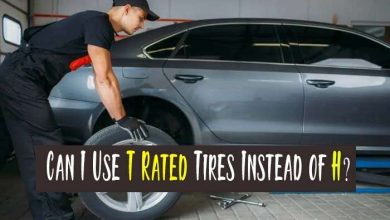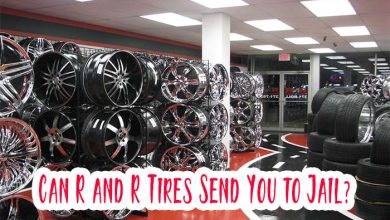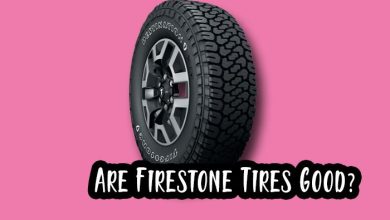Can a Tire Be Patched on the Side? Your Expert Guide
We often focus on tires’ treads, air pressure, and overall condition. However, the sidewall of a tire is equally crucial but often overlooked. The sidewall maintains the tire’s structural integrity and ensures a smooth and safe ride.
No, never patch a tire on the sidewall. It’s a safety hazard. The sidewall is the weakest part of the tire and cannot be repaired reliably. If you have a sidewall puncture, replace the tire immediately.
Understanding Tire Sidewall Damage
Tire sidewall damage can occur due to various factors, such as hitting a curb, running over sharp objects, or even just regular wear and tear. This damage manifests as cuts, gouges, punctures, or bulges on the side of the tire.

Promptly addressing sidewall damage is crucial because neglecting it can lead to a blowout and a potentially dangerous situation on the road.
Read my recent post – CrossClimate 2 vs Winter Tires
Types of Tire Sidewall Damage
Let’s break down the common types of sidewall damage:
1. Cuts and Gouges
Cuts and gouges on the tire’s sidewall can occur from contact with sharp objects like rocks, glass, or metal debris on the road. These damages may seem superficial but can weaken the tire’s structure over time.
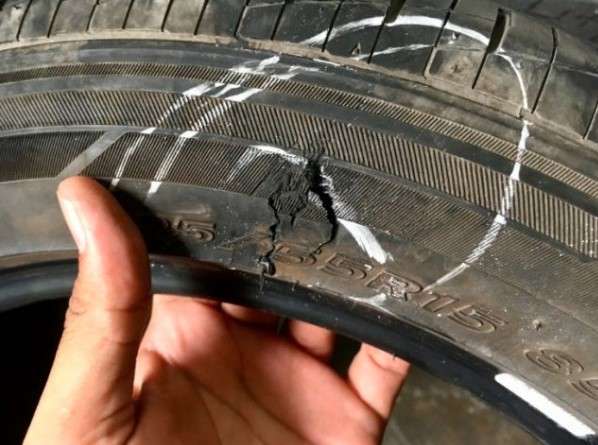
2. Punctures
Punctures on the sidewall are often the result of nails, screws, or other sharp objects piercing the rubber. While these punctures can be repaired on the tread area, sidewall punctures pose a different challenge.
3. Bulges
Sidewall bulges are a clear indicator of internal damage. They typically occur when the tire’s internal structure has been compromised, causing air to escape into the layers of the tire. Bulges are serious and require immediate attention.
Now, let’s address the burning question:
Read Also: Can I Drive with a Bubble in My Tire?
Can a Tire Be Patched on the Side?
Can a Tire Be Patched on the Side? The short answer is no. Patching is not a viable solution for tire sidewall damage. Unlike tread punctures, which can often be safely repaired, the sidewall differs.
The sidewall is responsible for bearing the vehicle’s weight, and any compromise in its integrity poses a significant safety risk.
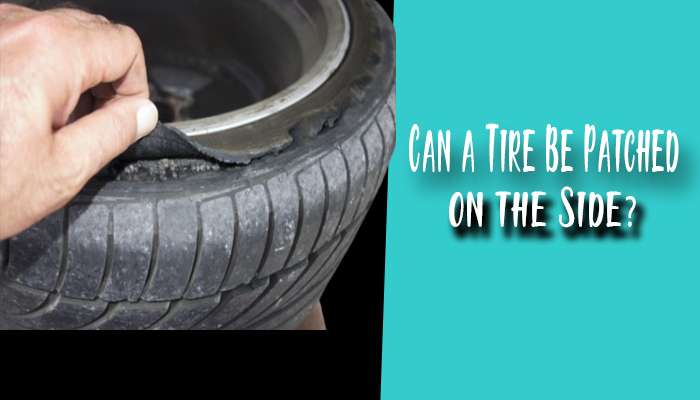
How Tire Sidewall Patching Works
Tire sidewall patching is generally not recommended because it’s a complex and risky procedure. Patching involves removing a section of the damaged sidewall and applying a patch or plug to seal the hole. However, this unreliable method can lead to further damage or tire failure.
Read Also: Lexus RX 350 Tire Pressure
Preventing Tire Sidewall Damage
Now that you know sidewall damage can’t be patched, focusing on prevention is essential. Here are some tips to keep your tires’ sidewalls in tip-top shape:
- Avoid Curb Contact: Be mindful when parking or maneuvering to avoid hitting curbs or obstacles.
- Watch the Road: Watch for debris, potholes, and sharp objects on the road.
- Maintain Proper Tire Pressure: Underinflated tires are more susceptible to sidewall damage.
- Regular Inspections: Check your tires for any signs of damage during routine maintenance.
- Drive Safely: Avoid aggressive driving behaviors that increase the risk of sidewall damage.
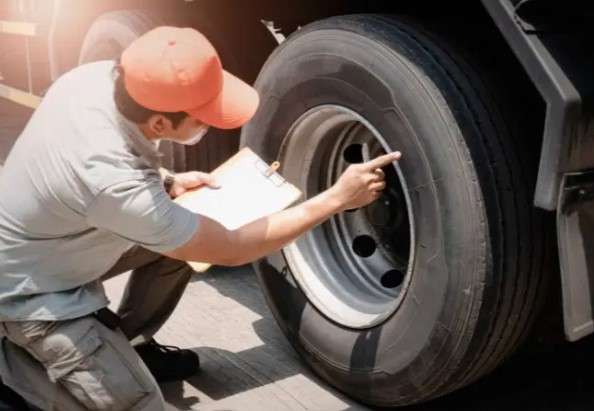
Frequently Asked Questions
Can You Drive on a Tire with Sidewall Damage?
Driving on a tire with sidewall damage is highly discouraged. Sidewall damage compromises the tire’s structural integrity, making it susceptible to blowouts or sudden failures. It’s best to replace a tire with sidewall damage promptly.
How Long Does a Patched Tire Sidewall Last?
Tire sidewall patching is not a reliable or long-term solution. Even if a patch seems to hold, predicting how long it will last is difficult. Replacing the damaged tire is the safest and most reliable option.
Is It Safe to Patch a Run-Flat Tire’s Sidewall?
No, it’s not safe to patch a run-flat tire’s sidewall. Run-flat tires have reinforced sidewalls to support the vehicle’s weight even after losing air pressure. Attempting to patch the sidewall of a run-flat tire can compromise this safety feature.
What Are the Alternatives to Sidewall Patching?
Instead of patching a damaged sidewall, consider these alternatives:
1. Tire Replacement: Replace the damaged tire with a new or spare one.
2. Tire Warranty: Check if your tire has a warranty that covers sidewall damage.
3. Roadside Assistance: Roadside assistance services can help with tire replacement if you have a flat tire.
What Part of the Tire Can’t Be Patched?
Tire patches are typically limited to the tread area. As mentioned earlier, the sidewall is a critical component that cannot be safely patched. Any damage to the sidewall warrants tire replacement.
Conclusion
In the world of tires, safety should always be the top priority. When it comes to sidewall damage, remember that prevention is key. Avoiding damage in the first place by driving carefully and maintaining your tires is the best approach.
Read More: Can Broken Glass Pop a Tire?
And when you encounter sidewall damage, don’t try to patch it up—replace the tire for your safety and peace of mind.
By now, you’re well-versed in the intricacies of tire sidewall damage and patching limitations. Stay safe on the road, and if you ever have doubts about your tire’s condition, consult a professional for guidance.
References
Glossary
- Tread: The part of the tire that comes into contact with the road.
- Blowout: A sudden and complete loss of air pressure in a tire.
- Puncture: A small hole or opening in the tire’s rubber.
- Reinforced Sidewall: A sidewall designed to provide support even after a loss of air pressure.

